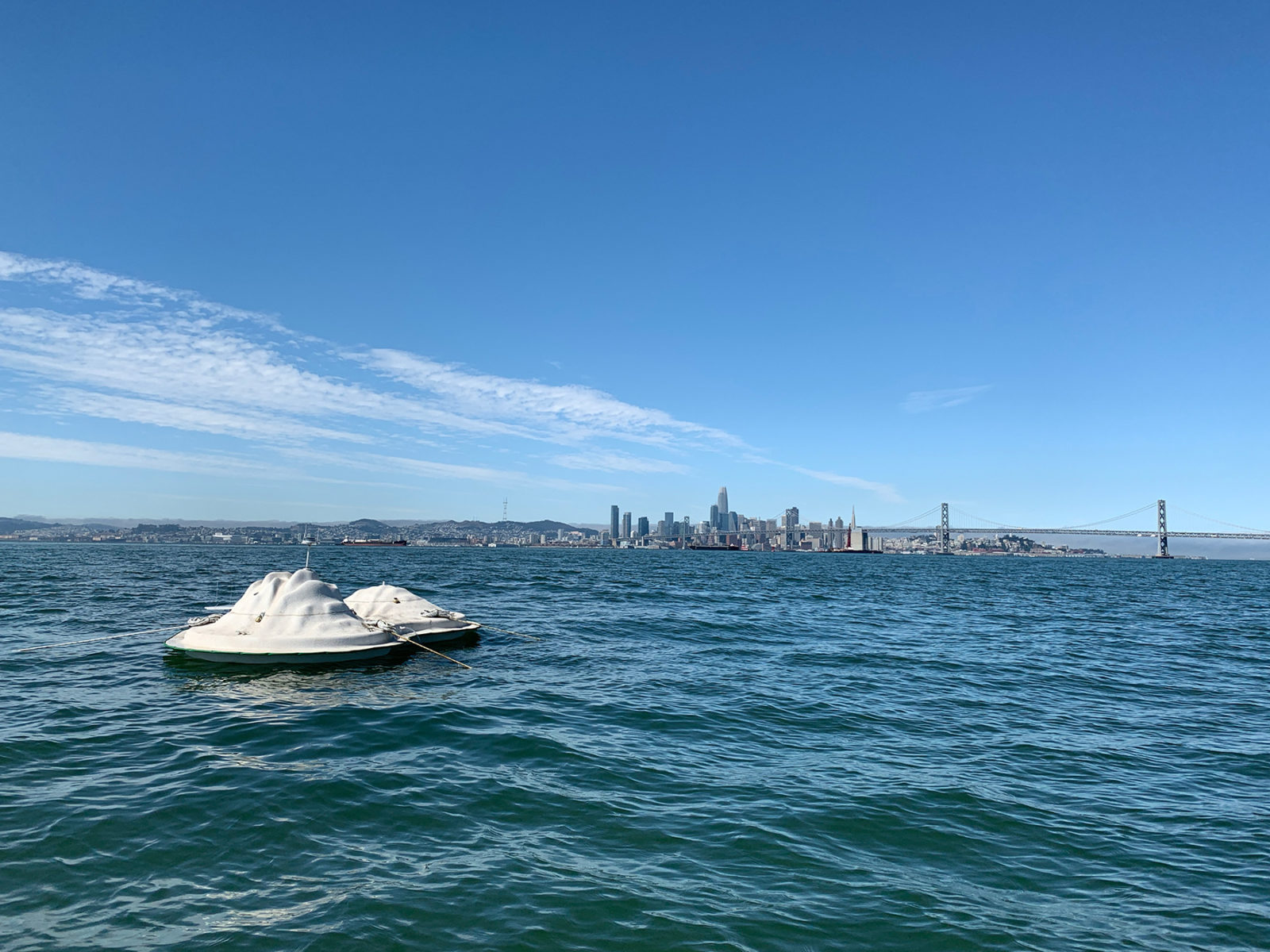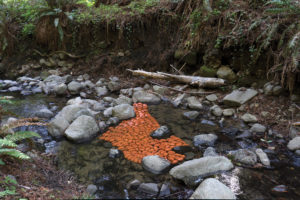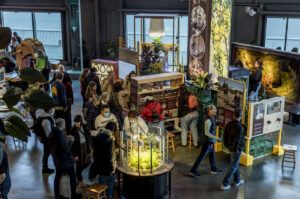
Off the coast of Oakland’s Middle Harbor Shoreline Park floats a fiberglass structure that resembles a bulbous amoeba. About the size of a small car, the structure is defined by two hill-like mounds and an uneven corrugated surface. Seawater and rainwater have pooled in some of its valleys, and its original factory-white color has been weathered green and gray by algae.
Though hidden below the water, the underside of the structure is a mirror image of what sits above the surface—and is ultimately more important than its visible counterpart. Rather than a piece of abstract art, as it might appear to those on the shore—or perhaps in addition to this function—the structure is actually a floating laboratory exploring novel ways to adapt to climate change.
Preparation for rising sea levels in the Bay Area often starts with conventional solutions, like expensive seawalls. Taking a less orthodox approach, researchers at California College of the Arts and marine ecologists at Moss Landing Marine Laboratories have created the Buoyant Ecologies Float Lab to explore the possible roles floating architecture might play in protecting coastal communities and supporting marine ecosystems.
The premise of this research is that “fouling communities,” the term marine ecologists use for often-unwanted invertebrates and algae that attach to docks and the hulls of boats, may be able to perform the important work of absorbing and dissipating energy from waves during storms if allowed to colonize the bottom of floating structures. So, hanging from the underside of the Lab are what the researchers call “habitat columns,” structures meant to attract these communities and mimic mangrove roots and kelp forests. During tests conducted in the Oakland Estuary prior to the launch of the Float Lab, “the growth of invertebrates on these columns became so dense that the columns disappeared,” transforming into a sort of ecological sponge, architect Adam Marcus says. He and his colleagues believe that a network of floating structures outfitted with similar sponges—and the increased surface area they provide—could protect against erosion caused by rising sea levels.
The researchers are also interested in exploring how fouling communities respond to different geometries. They’re exploring this idea by using elements from architectural design, digital fabrication, and computational ecology to produce surfaces that vary in texture and shape. “The hypothesis is that the geometry of underwater surfaces can be contoured to produce hillocks and valleys of variable sizes, specifically optimized for the settlement of different species,” architect Margaret Ikeda explains. That would mean, she adds, that by sculpting a structure with the right topography, a designer could essentially custom-order a marine ecosystem—one that’s able “to protect smaller organisms from larger predators and therefore maintain a degree of biodiversity.” This is an especially important concept, since more traditional flat-bottom boats often attract nonnative species that crowd out native competitors.
The Float Lab launched at the Port of Oakland last fall, after five years of preparatory research. Although the COVID-19 pandemic has prevented divers from conducting planned sampling, underwater cameras show that some desired habitats have sprung up around the vessel in its first year. The bottom is completely covered with invertebrates, and the top has become an active feeding perch for birds.
Still, while it might be easy to jump from this research to envisioning a science-fiction future of floating houses, with artificial tidal habitats on top and thriving marine communities enveloping the bottom, the architects are careful to stress that their work thus far represents merely the early stages of a multiyear project. As research picks up again, for example, they plan to install an array of sensors to gather data on the Lab’s impact on salinity, light, and temperature in the surrounding waters.
Public outreach and educational activities involving the Float Lab have also been stalled due to the pandemic. For now, the Lab remains visible to all who might take a socially distanced stroll through Middle Harbor Shoreline Park. In a time when opportunities to appreciate art are limited, it bobs there like a floating sculpture, silently collecting organisms and data to help us prepare for our turbulent future.




